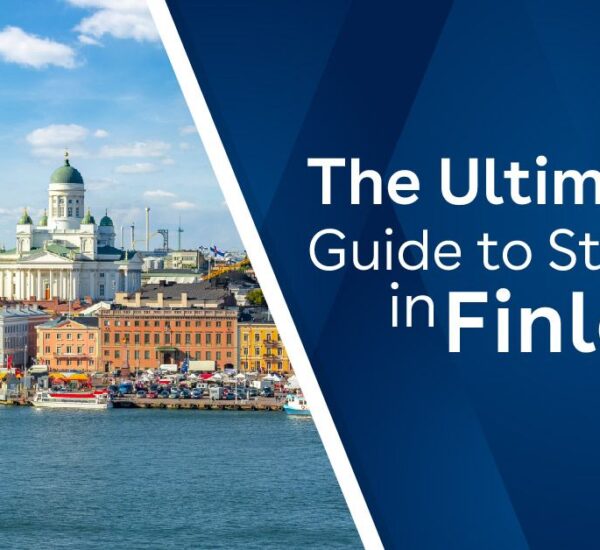Studying in the USA is a dream for many, and with its world-class institutions, it can be the luckiest day of your life once you receive that acceptance letter. However, the university admission process in the United States for international students requires careful planning, thorough research, and timely execution. In this comprehensive guide—we’ll walk you through every step: from choosing the right program to acing your visa interview.
Table of Contents
Why Study in the USA?
The United States is home to over 4,000 colleges and universities, many ranked among the world’s best. Here’s why it’s a top study abroad destination:
Academic Excellence: Cutting-edge research, renowned faculty, and rigorous curricula.
Diverse Programs: From Engineering to Business, Arts to Computer Science—there’s a fit for every passion.
Cultural Immersion: Live on a multicultural campus, join student clubs, and build a global network.
Career Opportunities: Access to internships at Fortune 500 companies and post-graduation work options (CPT/OPT).
Timeline & Deadlines
The US academic year typically runs late August/early September to May. Here’s a sample timeline for fall admission:
| Timeframe | Action |
|---|---|
| 18–24 months before enrollment | Explore programs, research universities |
| 12–18 months before | Take standardized tests (SAT/ACT, TOEFL/IELTS) |
| 10–12 months before | Finalize university list; note each deadline |
| 8–10 months before | Begin drafting SOP, LORs, and essays |
| 6–8 months before | Submit applications via Common App/Coalition |
| 5–6 months before | Receive admission offers; decide and pay deposit |
| 4–5 months before | Apply for F-1 Student Visa |
| 1–2 months before | Arrange housing, flights, and pre-departure tasks |
Researching & Shortlisting Universities
With thousands of options, proper research is critical:
Identify Your Major & Career Goals
Match your passion with the department’s strengths.
Look for accreditation (e.g., ABET for engineering).
Rankings & Reputation
QS World Rankings, Times Higher Education, and US News.
But don’t chase rank alone—focus on program fit.
Location & Campus Life
Urban vs. rural, climate preferences, proximity to internships.
Check student reviews on Niche and Reddit.
Tuition & Living Costs
Use tools like College Board’s International Student Calculator.
Compare in-state vs. out-of-state public universities.
Scholarships & Financial Aid
Some schools offer full-ride scholarships to internationals (e.g., Duke’s Karsh Fellowships).
Check each university’s financial aid page.
Understanding US University Admission Requirements
Although each institution differs, typical requirements include:
Academic Transcripts: High school (for undergrad) or bachelor’s degree (for grad).
Standardized Test Scores: SAT/ACT for undergrad; GRE/GMAT for graduate programs.
English Proficiency: TOEFL, IELTS, or Duolingo English Test.
Statement of Purpose (SOP) / Personal Essay: Articulate your motivations and fit.
Letters of Recommendation (LORs): Usually 2–3 from teachers or employers.
Resume / Curriculum Vitae (for graduate applicants).
Financial Documents: Bank statements, scholarship letters, or sponsor affidavits.
Application Form & Fee: Completed online, fee $50–$200 each.
Standardized Tests & English Proficiency
Undergraduate
SAT: Math, Evidence-Based Reading & Writing; optional Essay.
ACT: English, Math, Reading, Science; optional Writing.
Graduate
GRE: Verbal, Quantitative, Analytical Writing (Graduate programs).
GMAT: Quantitative focus for MBA programs.
English Proficiency
TOEFL iBT: Score range 0–120; many universities require 80+.
IELTS Academic: Band 0–9; target 6.5+ for competitive programs.
Duolingo English Test: Accepted by 2,000+ institutions (convenient online).
Financing Your US Education
Tuition & Fees
- Public Universities: $15,000–$30,000/year (in-state vs. out-of-state).
- Private Universities: $35,000–$60,000/year average.
Scholarships & Aid
Merit-based: Based on academics, test scores, special talents.
Need-based: Limited for internationals—some Ivy League schools provide aid.
External Scholarships: Fulbright, Inlaks, Chevening (for select nationalities).
Assistantships: Teaching or research roles for graduate students (stipend + tuition waiver).
Working Part-Time
- On-Campus: 20 hours/week allowed on F-1 visa; positions in libraries, labs, dining halls.
- Off-Campus: Curricular Practical Training (CPT) and Optional Practical Training (OPT) options.
Preparing Your Application Materials
Academic Transcripts:
Get official transcripts translated if not in English.
Use credential evaluation services (WES, ECE) if required.
Statement of Purpose / Personal Essay:
Tailor each essay to the university’s values and program strengths.
Answer prompts directly, maintain clear structure: Intro, Body, Conclusion.
Letters of Recommendation:
Choose referees who know you well academically or professionally.
Provide them with your resume, transcript, and essay prompts.
Resume / CV (Graduate):
Highlight relevant research, internships, publications, and leadership roles.
Proof of Funds:
Bank statements covering first-year tuition + living costs.
Scholarship award letters or sponsor’s affidavit of support.
Online Application Platforms
Common Application (Common App): Used by 900+ US colleges.
Coalition Application: Emphasizes accessibility, used by 150+ schools.
University-Specific Portals: e.g., MIT’s MyMIT, Harvard’s HAA.
Best Practices
Create a spreadsheet to track deadlines, requirements, and status.
Double-check each school’s supplemental essays and additional forms.
Save copies of every submission confirmation.
Application Fees & Waivers
Typical Fee: $50–$100 per application; prestige schools can charge $150–$200.
Fee Waivers: Available via Common App for students meeting hardship criteria—apply early and demonstrate need.
Applying for a US Student Visa
Visa Types
- F-1 Visa: For full-time academic programs.
- J-1 Visa: Exchange visitor programs (requires sponsor).
- M-1 Visa: Vocational training.
Process Overview
- Receive I-20 / DS-2019 from your institution.
- Pay SEVIS I-901 Fee ($350 for F-1/J-1).
- Complete DS-160 online, upload photo.
- Schedule Visa Interview at US embassy/consulate.
- Attend Interview, bring documents (I-20, passport, financials, transcripts).
- Receive Visa Stamp in passport—ready to travel.
Tips for a Successful Visa Interview
Be Honest & Concise: Answer only what’s asked.
Demonstrate Strong Ties: Explain your intention to return home post-study.
Show Financial Stability: Present clear bank statements and scholarship letters.
Know Your Program: Articulate why you chose your major and university.
Dress Professionally: Business casual or formal attire.
Pre-Departure Checklist
Arrange Housing: University dorm vs. off-campus apartment.
Book Flights Early: Student fares can save 20–30%.
Health Insurance: Mandatory for most universities.
Pack Essentials: Climate-appropriate clothing, electronics (with adapters), prescriptions.
Connect with Peers: Join Facebook groups, Slack channels, or university forums.
Frequently Asked Questions (FAQs)
Q1: Can I apply to US universities without test scores?
A1: Some test-optional schools exist, but most require SAT/ACT or TOEFL/IELTS scores.
Q2: How many universities should I apply to?
A2: Aim for 5–8 schools: a mix of reach, match, and safety.
Q3: When will I receive my I-20?
A3: Universities typically issue I-20s 1–4 weeks after you pay deposit and clear financial verification.
Q4: Is it hard to get scholarships as an international student?
A4: Competitive but possible—focus on merit-based scholarships, external fellowships, and assistantships for grad students.
Q5: Can I switch programs after arriving on an F-1 visa?
A5: Yes, but you must update your SEVIS record and get a new I-20.
Your Journey Begins Today!
Applying to universities in the USA as an international student is a multi-step journey, but with strategic planning, early preparation, and detailed research, you can transform your dream into reality. Use this guide to navigate deadlines, compile compelling applications, secure funding, and successfully obtain your F-1 student visa.
Ready to start? Download our free application tracker template and join our Global Student Community for personalized advice. Good luck!


